It’s been quite a ride over the last 4 years. We introduced the Global Village Construction Set (GVCS) on the world stage at TED in 2011:
Critics of the open source economy point out that “Open source is a system of development that doesn’t have the requisite positive feedback loops needed to build a viable economic system.” (link) This is a belief held firmly in the economic mainstream – and is the reason why some open source projects turn proprietary once they develop working products – such as the recent case of Makerbot.
At the same time, we’ve been busy innovating open source revenue models that can be built upon efficient production, and showing that they are efficient because they are open source. Contributors continue to work in the OSE community to scratch an itch or for pay – to develop products that meet real needs.
Efficiency is key to making open source technology viable. In December 2012, we have shown for the first time that one of our heavy machines, the Compressed Earth Block (CEB) Press, can be built in a single day. We combined modular design, digital fabrication, and swarm build techniques – for a rapid, parallel, Extreme Build. One Day.
Merry Christmas from Open Source Ecology. See corresponding blog post.
The promise of the distributed approach lies in enhancing access to raw productive power. We have learned that our blueprints are sufficient for someone to download and build machines on their own. In 2011, shortly after the TED Talk, the first ever independent replication occurred:
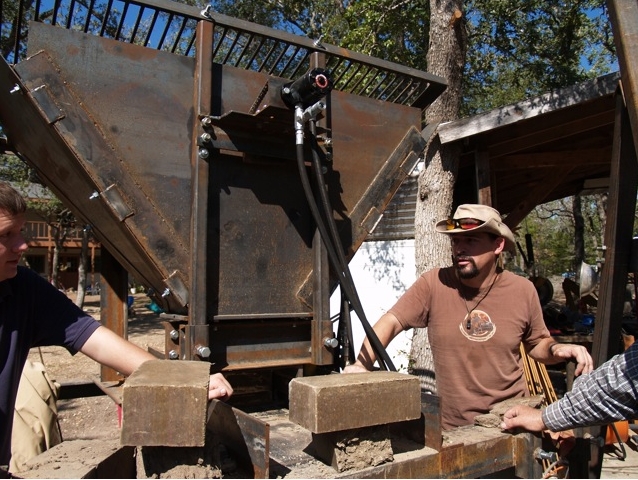
James Slade from Texas. First ever replication of an OSE machine – the brick press – in 2011. See details.
About a dozen other replications followed, and overall 104 GVCS machines were built between 2008 and end of 2014. Most were built at the OSE headquarters in Missouri. Most were heavy products like the brick press, tractors, and MicroHouses – and there were also a few small ones like the Micro Power Cube, CNC Circuit Mill, and 3D Printer.
Machines built until the end of 2012. All entries in this graph have links to the details – see original document to access links.
We were supported by the Shuttleworth Foundation in 2012 and 2013. We focused on test-driven prototypes in order to develop and test how the GVCS product ecologies fit together, but did not focus on a single completed product. We learned that the foundation support model is inherently non-scalable to world transformation. We believe that we can help scale the open hardware movement to the next trillion dollar economy by self-sustaining enterprise models, not by foundation funding.
In 2014, building upon our Extreme Manufacturing techniques, we developed a social production model that includes revenue from production (sale of a machine) and from skill-training workshop fees. When we produced the brick press last year, we netted $10k from a weekend workshop – and learned a lot while we were at it. This model relies on the premise that we know how to build machines in a single day – so that we can produce an immersive experience around a build. One Day.
The brick press is important because it can potentially be the start of a killer app. If we can produce high performance open source houses at a fraction of commercial costs using on-site material as our building block, then we have entered a $100B market in the USA alone.
We used our brick press to build out living and working infrastructure in 2012. In 2014, we built several modular houses from CEBs to show that CEB construction can be cost effective.
Our last build, Prototype 4, featured a design-build collaboration with about 50 people, where we finished an 800 square foot addition, with modular construction, CEB walls, in-ground hydronic heat for $15k. We built the shell and complete roof with insulation in the 5 days of the workshop. The interior finish looks like this now:
Techniques for building a house in 1 day exist, and that’s where we are taking our hybrid CEB build.
Our next step involves taking the CEB Press the last step: a Distributive Enterprise (DE) model. We will be publishing not only the machine designs that have been tested over the past year, but a model of production that allows anybody to build the machine (or have it built) anywhere in the world. This will be a test case for distributed open source manufacturing applied to heavy equipment. The main challenge will probably be adapting builds to local supply chains, which will require developing an open supply chain database. We will publish both the quick-build version that can be cut with CNC, and the older, manually-built version for builds where CNC cutting is not available. See CEB Press Genealogy for the machine versions.
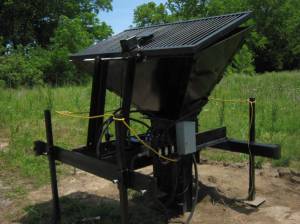
First brick press product release of 2010. See blog post.
OSE’s concept is to distribute production such that the demand can be met by a network of producers, as opposed to OSE trying to capture the entire market. This is part of OSE’s greater goal: creating an open source production ecosystem to regenerate the planet. For the brick press, OSE will test (dogfood) its own production model, while we encourage start-up of other entrepreneurs. OSE will be developing training and a quality control certification process. We propose that large production volumes can be met more efficiently via distributed production. This is important, for example, if an entire region needs to be rebuilt after a catastrophe, then the distributed effort can deliver, say, 1000 machines on a week’s time scale. This would be impossible for a single manufacturer. By developing the CEB distributive enterprise, we would like to test the practicality of the distributed model. We estimate that the existing market for hydraulic brick presses is about 1000 per year. We expect further market creation after full deployment of open source hybrid CEB construction techniques.
Because we think that a distributed production model can be applied to many consumer products and production machines – from cars to houses to organic food – and that for distributed production to work it has to be open source – we think that it’s simply inevitable that open source distributed production will permeate the global economy at some point. The missing link at present is access to open source product designs (many open designs are closed once they get good enough or choose a non-commercial license) and access to localized, open source production infrastructures/facilities. The distributed nature of solar energy as the fundamental fuel and feedstock of sustainable civilization works in the favor of a distributed economy.
Wait a minute, is the economy not rational because of some invisible hand behind the scenes, and our distributive enterprise goals are doomed to fail?
To develop the CEB Press disributive enterprise model, we will return to our Design Sprints to develop all the aspects of the DE from machine documentation to market research and everything in between. If effort allows, we will start addressing the hybrid CEB housing designs. Our release of the CEB documentation is intended for the end of April. We will test a new Design Sprint protocol, where participation is based on commitment to specific tasks of a carefully crafted collaboration architecture. Previously, we held the design sprints without knowing who will show up.
Design Sprint tasks include engineering, concept design, enterprise development, documentation, explainer videos, and many others intertwined into a meaningful whole. We welcome all self-starter super-cooperators to join. Our goal for this year is to host mega Design Sprints and Hackathons where a high level of coordination is achieved for a few hundred participants. If you’d like to participate on the Brick Press, please fill out the Tech Team Culturing Survey to receive the Design Sprint invitation.
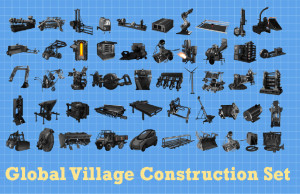
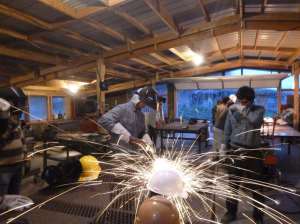
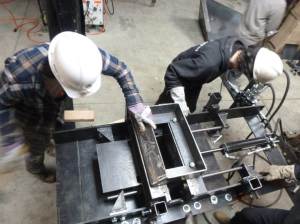


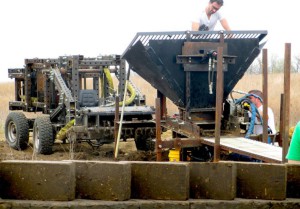
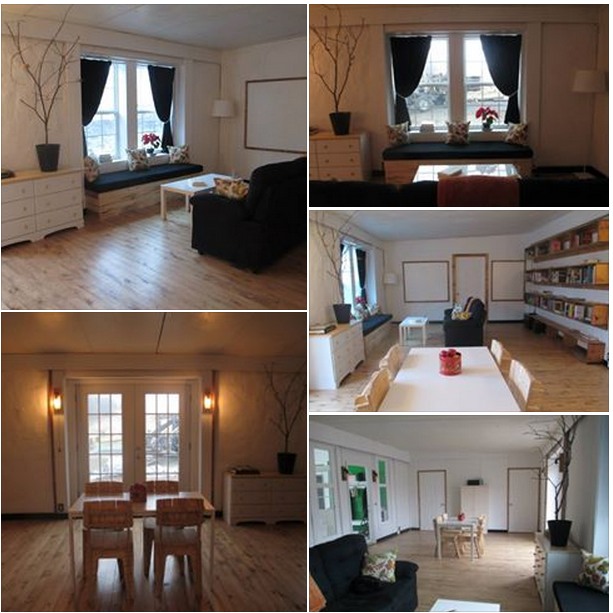
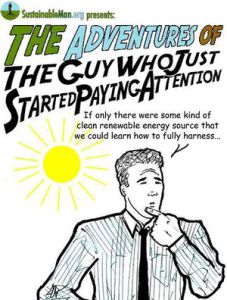
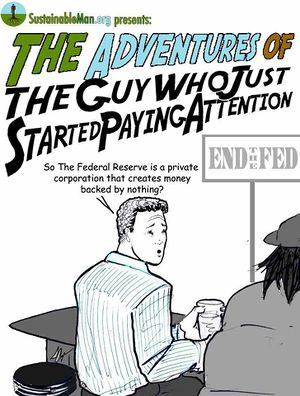

Any comments from readers? Suggestions? Requests? Collaborations?
It’s great having a blog update!
As far as feedback goes, I feel like I’m getting a little lost on the scope of OSE, which seems to continue to grow wider with the emphasis on the Distributive Enterprise. I personally feel like the primary goal of OSE should be the design of the 50 machines themselves…expanding the bars on this chart:
http://opensourceecology.org/w/images/c/c9/Completionstatus.jpg
There has been an increase in focus on the “how” of the machines, and the “why” as to their use in a newly created economy, but I would like to see more of the “what”–the machines’ design, construction, and use.
We couldn’t agree with you more on completion. The scope is the same: to create the open source economy. Over time, we learn what that really takes. I said “we’ll be done in 2 years” in 2012 – but the main challenges to that were: (1) difficulty of managing all the new documentation and contributions; (2) learning that it takes as much work to go from 95% to 100% as from 0 to 95%; (3) processes and structures to scale and fund the project. The biggest challenge is innovation on business models required to make open source work. Hence the Extreme Manufacturing and Distributive Enterprise developments. For the ‘what’ – we are revamping the development process for radical acceleration of progress. We’ve seen evidence that mass collaboration can really work – but to make that a normal and replicable part of our process is the next challenge. We’re trying to make the economics replicable, grassroots bootsrapped – so that the project could really grow. We don’t have a $30M budget like Wikipedia – we think that we need to earn it and show others how to earn it. That way the project can truly scale – with its built-in economics. Otherwise, developers come and go as volunteers and the necessary continuity is lost. So it’s more complex than it might seem, righfully so if we’re trying to change the world.
Will you finally release (tested) metric versions of the CAD for the CEB press (and others) for us outside the US? Using sheet as stock material makes it non trivial to adjust the dimensions. If I had the CAD and good instructions, I might consider building one this summer, since having the metal cut would propably cost a couple hundred euros, or even much less if done at my school. But I don’t have the resources to do major development work currently (the required infra will come later).
[…] Updates from OSE: http://opensourceecology.org/ose-4-year-review […]
Elmo – join our Design Sprint and we will make this happen. We use 1/2″, 1/4″, and 1/8″ sheet for the digital cut version. What is the dimension of stock available where you are? Part of our deployment will involve getting a database of supply chains. I guess that means we will take the digital CAD version and adjust it for other common metal stock. We would need to do this for the digitally cut as well as older brick press versions. What is the closest stock thickness to 1/2″, 1/4″, and 1/8″ sheet steel where you are?
1/2″ : 12mm
1/4″ : 6mm
1/8″ : 3mm
Can you send link to sources? Are these sources found easily throughout Europe?
Pretty much everywhere except USA. The worldwide standard is to use SI units.
eg:
Russia: http://eng.mmk.ru/for_buyers/products/products_for_the_automotive_industry_and_household_appliances/
China: http://www.hebgtjt.com/lists.jsp?pid=17 (in Chinese)
Germany: http://www.blume-stahlservice.de/englisch/products/hot-rolled-strip.html
South Africa: http://www.avengtridentsteel.co.za/sites/trident.co.za/files/Aveng%20Trident%20Steel%20Sheet_Plate%20LR.pdf
Australia: http://steelproducts.bluescopesteel.com.au/home/technical-library/datasheets
Is there any way to collaborate apart from the design sprints? I’m a student outside the US with a bit of Inventor experience and have done some 3d-printing and CNC-machine building, and would love to support the project, and maybe intern/visit and work at one point if possible, but for now, I just want to contribute if there’s any way I can help.
Certainly. We will have a task list as we move along – people can participate in Design Sprints or work independently.
Sounds great. The project is very interesting – I’m especially looking forward to seeing some of the manufacturing tools (lathes, CNC-machines and so forth) being developed and documented.
[…] http://opensourceecology.org/ose-4-year-review/ […]
Hi Marcin,
As you’re asking for it, I’ve got a few comments to say. In this review I think you should be talking about the challenges, the things that didn’t get the way you expected, and the failures, along with the achievements. These 4 years were full of all of them and I think it’s important to expose them. People following the project and interested in replicating it will need these information, otherwise they will replicate the same failures, loose time, money, and maybe give up. I also think it’s the concept of open source : open sourcing not only your achievements but also the path that lead to it.
Saying that, there’s a few challenges I saw during my stay at Factor e Farm that are still waiting for an answer and should be exposed here :
– The build of the brick press in one day may have been done once, but the two brick presses we built this summer took us more than a week. Here is the problem of replication of what have been done. Every brick press (and all the other machines at FeF) needs a lot of adjustments and problems solving, that only the developer or builder know how to do. Each one of them needs to be studied, analyzed, and the solution exposed, before the brick press is finally released. That’s a huge amount of work, that cannot be done through Design Sprint, so you also need people collaborating with you on site.
– About the Microhouses, the price is quite low right now because it rely on a LOT a volunteers building it, and a doubtful quality. What would be the real price if it had to be build by paid workers? On the quality, what are the feedbacks about the first CEB buildings built several years ago? Why is the old workshop crumbling apart? What could be done so that the next buildings will stand longer? Why the idea of stabilized blocs didn’t work for the Microhouse 3 built this summer? That’s the real questions about the microhouse.
– You’re talking about the development of a social production model producing revenues. How many people worked on the project, for what amount of time, and how many people can you pay with this model? That information is important to have. Today OSE rely on the massive use of volunteer work, and can only really pay one person. Could it work else way? Or how the use of volunteers can be generalized? How can the network of producers you’re talking about can deal with that in order to replicate the project?
It’s not a bad thing to have pending problems and challenges, every project have some. Acknowledging them is the first step of solving them. OSE is a great project but should be more communicating on it, and I think a 4 year review is a good moment to do it. In order to give a real overview of where the project is right now, and what is coming next.
By the way, thanks for keeping this project on tracks, it’s really worth it. I hope you’ll find people to help you on site on the long term.
Great comments. Regarding the 1 day build, we got the build down to 4 days in October 2012, 2 days in November, and then the single day in December 2012 – using complete documentation and Language Agnostic Instructionals. The key was that the documentation was complete. Since then, we made a few significant changes, and documented them in 2014. The main difference in the 2014 runs was that the documentation was not taken to 100%, and I deliberately ran an experiment of what happens when I step out of the build and the whole team leads the work – to prove that the builds can be replicable.
It probably takes just about as much work to take the documentation from 95% to 100% as it takes to go from 0 to 95%. For the next release, we will get to 100%.
On the microhouses, the innovation in the model is that the labor for a build is provided by the workshop participants in a workshop scenario. The point is that it’s a social production model. Can it be replicable and provide high quality results? That’s the package we are developing. The economics appear to work. The build organizer (such as OSE) receives tuition from workshop participants. The house owner receives a house at the cost of materials. The participant receives an immersive learning, social experience. The key is simplifying build techniques for radical efficiency, such that, for example, the entire roof with insulation can be built in a day, as shown in MicroHouse 4. The trick is innovation in the build process, and building in quality control as part of the project workflow.
Our 2012 structures at Factor e Farm used unstabilized block. We have learned that in high winds here, we get horizontal rains – so the overhangs do not protect the structure from rain. Using stabilized block helps this issue, but so does a proper stucco. We will stucco these structures this year. We probably want to modify our soil pulverizer so that it mixes soil cement more effectively if we want to use stabilized block.
On the social production model, it is not our goal to employ people. It is to develop the model, to test it ourselves by running workshops successfully, and then demonstrating that we can teach other entrepreneurs to run these workshops, or other related enterprises, successfully. Our general proposed figures for what we have done so far included charging $300 for a weekend workshop. For a build with 24 people, that generates $7200 in revenue. Additional value is generated from whatever product is built. Once this type of process is streamlined – one workshop or multiple workshops can be run each month. The goal is to create a network of entrepreneurs who can develop open source production enterprises all over the world. This may mean that we begin focusing more on the education aspect as time goes on. More on the distributive enterprise model in the next post.
Our main learning is that for any of this to be realistic, revenue models have to be built around open hardware. This includes radical efficiency to make enterprise economically feasible. If we are competing with the mainstream, then we need to be better than the mainstream. That’s what we believe open source development can provide. I hope this clears some things up.
I think the answer to the distribution & optimization question is illustrated by the evolution of the power cube. I seen the versions, and I like the evolved product. But if the prints and models for the individual components were accessible then people could begin building the discreet components.
Just saying it would be really cool if I could reach out to a community of people that make these standardized components. The community could build them and I could buy them and assemble.
When do you begin to share the designs?
Brilliant summary Marcin! Thank you for 4 years of revolutionary thought and action.
OSE is THE inspiration for many of the conscious minds of this planet. I personally hope you feel loved and supported!
The 1 day build concept is an excellent metric to prove efficiency indeed. I would suggest differenciating production efficiency and resource efficiency (MIPS analysis). And point out the CEB press is way over industrial methods in the latter. You can build it in 1 day? Great! But at the end of the day, resources and daily brick production (16000?) is what counts.
I am finally going to build a workshop this year, and since you started developing the CEB, I thought “that’s what needs to happen in my workshop!”, obviously the “my” refers to the first one I build.
I hope many more people give their workshops a global dimension!
Thanks for the kind words from a conscious mind:)
Last year we ran the machine at 6 bricks per minute for the full 4″ bricks, and 9 per minute for 2.5″ bricks – and that was at half the machine’s rated power. The machine is actually capable of producing almost twice that rate at full power, but we found that we need to resolve issues with the hydraulic flow. The hydraulic solenoids are rated up to 30 gallons per minute (gpm), but when we ran at 28 gpm, we were getting unexplained lockup that we have yet to resolve. We need to find a hydraulics expert to help us work out the solenoid issue.
Where could I download the CEB CAD files to start prototyping?
I tried but links failed.
Very hard to put a comment here, had to try 5 times. Not clear which box to write the names and the email address, no marking whatsoever over the comment data boxex.
CAD assets for CEB 6 are here – the items with a number in last column mean that work has been done on them. We could use a 3D printed model so we can examine various small changes, and to do a build procedure using a scale model that is videod for an instructional. There’s a number of tasks that can be done with the CAD, from animation, explainer videos, etc. http://opensourceecology.org/wiki/CEB_Press_6_-_Overall_Machine_-_Development_Board . Sign in to Design Sprints as in post.
Marcin,
I have a number of questions about OSE’s trajectory (I have been asking for some time now). I think the excitement many had about the promises of completing the GVCS and making them available for universal replication has significantly waned in recent years to the point that many have stopped paying attention to OSE. This is unfortunate. I was an early evangelist for OSE but I have not seen much progress over the past few years towards realizing your original goals.
So far, OSE has been largely preoccupied with the CEB press, power cubes, and micro houses. The preoccupation with micro houses has been particularly puzzling to me as that in no way has anything to do with OSE’s mission. Building compact homes is not within the purview of industry. Not only is it an area which already receives enough attention from other experts, it is an unnecessary distraction for OSE. Why so much time has been spent on it and so little time on actually building the 50 industrial equipment as stated in OSE’s mission statement is something for which I am still awaiting an answer.
OSE has lacked the ability, certainly the willingness to accept constructive input from many on the outside. I have suggested on a number of occasions that in order for compressed earth bricks to be a viable alternative to modern construction methods, it needs to be as good if not better than modern fired bricks. “Good enough” is not good enough.
CSEBs are the obvious solution to this problem. Adopting these practices is the only way you can ensure mass adoption of sustainable construction methods. Anything less is a needless waste of time. Your Factor e Farm home was largely constructed with traditional wood frame construction methods. The CEBs were used to make part of the walls. I don’t see how anyone can consider that revolutionary. I have suggested this before but it is about time you considered what Auroville Earth Institute are doing in India. They build multistory buildings entirely with CSEBs. No trees are harmed in the process.
Sorry for the long rant. I understand if you feel I may have been unfair in my assessment, but I am and have always been a believer in the transformational potential of your mission. I just think you should stay true to your mission and stay true to the fundamental tenants of open source.
Thanks
Thanks for your answer Marcin,
I really doubt that the workshop model will work. Having people paying to work for you is something quite exceptional. It worked for you because OSE have huge spotlight, because of you great TED talk, because of the huge amount of time we spent on communication, because you’re doing something that is new that nearly nobody else is doing, because they want to see the LifeTrac, PowerCube, the GVCS actually! But once it will be a little more generalized, with free online videos showing how to do, do you still think people will pay 300$+accommodation to come working for any entrepreneur? You’re in competition with all the others construction workshop, and many of them are free for participant, in exchange of their work, like the wwoofing concept.
I think the model that could work is the volunteering one. Somebody wants to build a house, he manages to gather volunteers among his friends and family, and call an entrepreneur to lead the build. The entrepreneur comes with the brick press, his knowledge, and gets paid by the future owner of the house. But the owner needs to find enough people willing to work for him for several days, he needs to have the infrastructure to give them accommodation and food, and money to pay the entrepreneurs and materials. I say entrepreneurs because I don’t think one people to lead the build is enough. Last times we were several people leading each part of the workshop, and were lucky to have professionals among the participants.
This model is nothing new, even Dancing Rabbit a few miles from OSE have been doing it for long. So I agree with what Micah said, OSE should go back to its real mission which is the GVCS, and stop developing something that already exist.
The OSE program is integrated in that it revolves around building machines, and dogfooding them. In dogfooding, we build our infrastructure with the tools that we build. That is why we are spending time on construction. We feel that sending machines out into the world if we don’t have deep exerience using them is not responsible. Construction is not outside of our mission. First, our land was an empty soybean field in 2006. So we began to build. Construction is proof that our machines work, and we gain direct feedback on the results. This approach allows us to have direct and personal experience and authority to know whether something really works or not. This is critical because our product is not a single machine, but all of the machines and how they work together to build an entire infrastructure. We have found that many people have trouble understanding this point. They say, why don’t you build your tractor this way or your house that way. Our response is that we are designing the machines as a set. We won’t know the full outcome until the entire set is built. This requires lots of experimenting.
This also relates to your point on bricks. No, our metric of success is not if we can produce a better brick. It is whether we can build a high-performance house at a fraction of the cost of standard construction – such that this model becomes highly replicable. That is what we are developing, and have found that a hybrid CEB/carpentry method allows us to have the positive features of both – high thermal mass and tornado proof walls, and modular, efficient builds. For the record, the MicroHouse 4 has has a perimeter of approximately 4000 bricks, or about 80,000 lb of bricks. The lumber content is approximately 8000 lbs (35 panels of 150 lb each, plus door/window modules). So the house is still 90% CEB by mass – and hence its excellent thermal mass properties.
We are also explicit about not entering vaulted and arched roof construction. Vaulted ceilings are advanced technique and require significant skill. The assumption for our model is that an unskilled DIY builder can perform the work under the guidance of an experienced leader. If we are developing a model that potentially millions of poeple will replicate, we want to make sure that nobody dies under a collapsed roof.
Thanks for the thorough reply, and for providing context to the issue. It has cleared up a few things for me. However, I still do not entirely agree.
Your mission statement was fairly straightforward:
“We’re developing open source industrial machines that can be made for a fraction of commercial costs, and sharing our designs online for free. The goal of Open Source Ecology is to create an open source economy – an efficient economy which increases innovation by open collaboration.
…
To get there, OSE is currently developing a set of open source blueprints for the Global Village Construction Set (GVCS) – a set of the 50 most important machines that it takes for modern life to exist – everything from a tractor, to an oven, to a circuit maker. In the process of creating the GVCS, OSE intends to develop a modular, scalable platform for documenting and developing open source, libre hardware…”
No where in your mission do you state that your goal is to help people build cheap homes. I am a software developer so my concept of Open Source might be narrow in this respect, but I have always understood OSE’s mission as laying the groundwork to help catalyze the development of a strong, vibrant. self sustaining open source hardware ecosystem. Part of this meant building the 50 most essential industrial hardware necessary for achieving these objectives and letting people utilize the hardware as they see fit. But 4 years later, it seems like you are still talking about the CEB press and hardly anything else.
There are many organizations involved in helping people construct cheap homes. Why not concentrate on building the industrial tools you originally intended to build and leave their application up to replicators? I understand the need for demonstrating the efficacy of your products, but there is a difference between demonstrating and being preoccupied with what seems like a distraction.
Your idea of developing the blueprints for the GVCS is what drew many people to OSE. It wasn’t modular home construction.
Thanks again. All the best.
“Our response is that we are designing the machines as a set.” // OK, machines_as_a_set. But aren’t you ignoring the so called ‘client-oriented’ approach, which is the core of a market economy? I mean: why did you decide that CEB technology should gain so much attention? The points are:
1) The cost of walls is only a fracture of the cost of a whole household. If we talking about ‘building of an infractructure’, then the more significant expenditure is a road! The availability and the quality of a road (including winter and demiseason periods) determines the cost_of_land in a particular region and the ability to build anything there. Lets check some videos about ‘roads’ in Russia: https://www.youtube.com/watch?v=KsjEtdKRttY
Roads are one of the most weak spots of so called ‘developing’ (actually undeveloped) countries, because of corruption and stealing (which are backed by the regimes).
2) Who is really interested in large-scale production of CEBs? Those people who have money to build or buy the machines, they also have wide choice between different building technics, which might be better than CEBs. Those people who have no money and who have a lot of cheap or free labour, they already use manual presses like CINVA (or other ‘low-tech’ techics if available such as a log house).
The second issue was descibed above: why did you decide that ‘paying_for_workshop’ economy model is replicable? Especially of you targeting to ‘poor’ audience? In my opinion, if you targeting to replicability, then your ‘clients’ (those who consume the technologies) need a way to earn money on their own and need the willingness to fund your futher work either from the gained profit (even if the profit is relatively small – scale matters) or from the potential future profit (kind of R&D investments). For example: owners of a backhoes might want to pay for the ability to dig a deeper pond (which they can dig for their ‘clients’), road builders might want to pay to build or clean the roads faster.
I absolutely love the work you’re doing – because it’s exactly the sort of direction we need foundations to be laid. Going distributive is essential if we expect the scaling up that we need – not only for OSE, but also for other great movements.
One problem I see: Purely open sourcing this will allow it to be appropriated for the anti-commons capitalist economy. I want to highly encourage you to consider finding a middle-ground between open source and closed source. The ideas put forward by Michel Bauwens at the P2P Society on Commons Based Reciprocity Licenses might be the best fit for your work. You could be foundational in helping this license build steam! Check it out: http://commonstransition.org/commons-based-reciprocity-licenses/
I’d love to hear back what you think of this.
Taylor
Philosophically, OSE doesn’t agree with Reciprocity Licenses allowing companies paying so they do not have to share. This is not consistent with creating a culture of open collaboration and sharing, as embodied in open source licenses. Practically, the reciprocity license terms appear to have unclear distinction between ‘good’ and ‘bad’ users. We agree with the general critique presented by http://blog.runtux.com/2014/05/28/242/. Our own comments on non-commercial clauses are here – http://opensourceecology.org/wiki/Why_OSE_Doesn%27t_Support_the_Use_of_Creative_Commons_Non-Commercial_Licenses. If ‘appropriation for the anti-commons capitalist economy’ is the issue, having corporations buy themselves out of sharing does not address such appropriation. In fact, allowing corporations to buy themselves out of being good citizens can promote such defection. If the companies are required to follow an open, viral license – they cannot appropriate open technology – without sharing derivatives. We want to encourage collaboration – not defection. The middle ground between open source and closed source is open source gobbling up closed source in due time – unless humanity forever remains unevolved:)
[…] Open Source Ecology released their “4 years review” demonstrating the contrary. OSE mission is to build the 50 machines fundamental to live our modern lives, starting from construction caterpillars to ovens, with open source and sustainable approach. In only four years, here is what they say about libre open source economy: […]